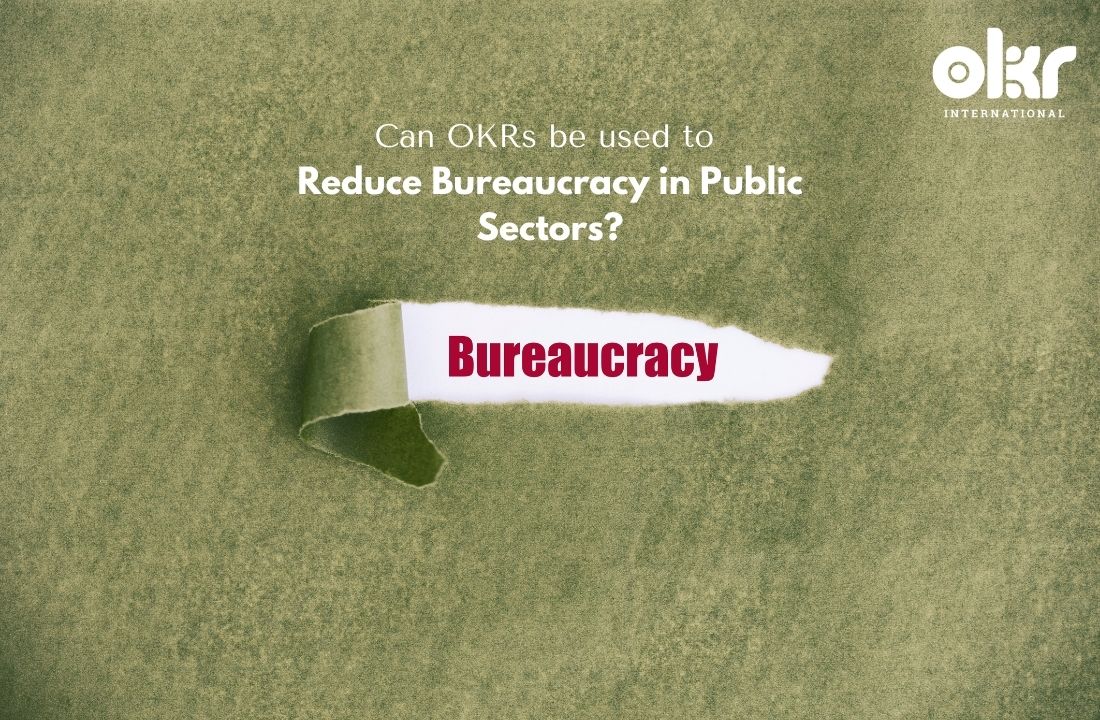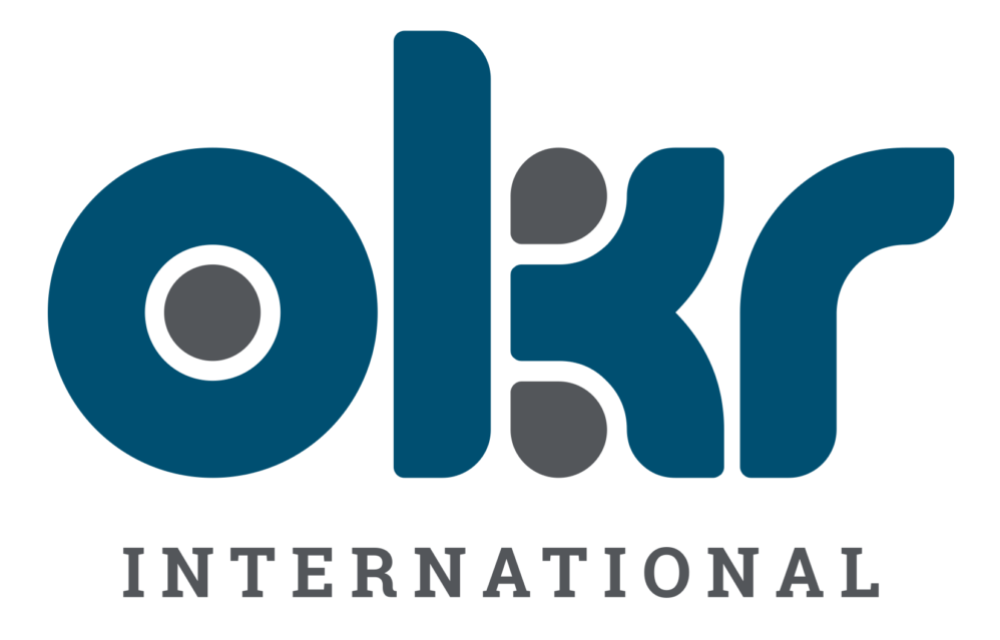Can OKRs be used to reduce bureaucracy in Public Sectors?
Let’s start with some background?
The significance of goal setting in government organizations cannot be overstated, as the repercussions of ambiguous goals extend beyond the organizational framework, potentially affecting citizens and the broader societal fabric. The process through which goals are established in public sector entities not only shapes the nature and direction of subsequent management actions, such as the formulation of subsidiary Government OKRs, but also plays a pivotal role in bolstering motivation and enhancing the performance of public services.
Multiple studies and research over the years highlights the negative impacts of vague goals in public institutions. Studies by Boyatzis (1982), Davis and Stazyk (2015), and Jung (2014) show that unclear objectives lead to a lack of “goal and action” competencies in public managers compared to those in the business sector. This gap is problematic due to the complex nature of public sector management.
Moreover, ambiguous goals negatively affect organizational structure, authority delegation, and decision-making, as noted by Downs (1967), Pandey and Rainey (2006), and Tullock (1965). Scholars like Barton (1980), Dahl and Lindblom (1953), Lynn (1981), Meyer (1979), and Warwick (1975) argue that this vagueness prevents the development of clear performance indicators, complicates the evaluation of goal achievement, and leads to a focus on rule adherence over actual performance outcomes.
So how do ambiguous goals impact public sectors and society?
The manner in which these goals are formulated and communicated significantly influences a range of organizational outcomes, from employee retention and satisfaction to the overall performance and efficacy of public services. Therefore, it is imperative for public sector leaders to prioritize clarity and precision in their goal-setting processes, aligning them closely with the unique needs and challenges of public administration.
The paradox of goal ambiguity in public organizations stems from their fundamental nature. Being accountable to a diverse range of stakeholders with conflicting interests, public organizations face difficulties in specifying clear organizational goals and performance objectives. This complexity is compounded by the lack of clear market indicators for “Outcome”, especially in areas concerning democratic values, human rights, and social welfare.
Here are some important impacts to consider
- Impact on Organizational Effectiveness: Ambiguous goals in public organizations can lead to inefficiencies and ineffectiveness in the delivery of public services. Without clear objectives, it becomes challenging for employees to understand their roles and responsibilities, leading to a lack of direction and purpose. This inefficiency directly impacts the quality of services delivered to the public, affecting societal welfare and trust in government institutions.
- Role Ambiguity and Employee Dissatisfaction: The lack of clarity in goals contributes to higher role ambiguity among employees. This ambiguity can lead to decreased job satisfaction and motivation, as well as increased turnover intentions. When public sector employees are not fully engaged or are frequently changing, the continuity and quality of public services suffer, which in turn can have negative repercussions on societal welfare and social trust.
- Difficulty in Performance Measurement and Accountability: Ambiguous goals make it difficult to develop clear and measurable performance indicators. This hinders the evaluation of goal achievement and undermines the accountability of public organizations. In a societal context, this lack of accountability can lead to misallocation of resources, inefficiencies, and a perception of negligence or corruption, further eroding public trust.
- Influence on Public Policy and Program Implementation: Ambiguity in organizational goals complicates the development and implementation of public policies and programs. It can lead to conflicting interpretations and priorities, resulting in policies and programs that are not well-aligned with societal needs or are implemented inefficiently.
- Challenges in Responding to Societal Needs: The evolving nature of societal needs requires public organizations to be adaptable and responsive. Ambiguous goals, however, can impede the ability of these organizations to effectively respond to changing demands, leading to a gap between public services and the actual needs of society.
- Implications for Democratic Engagement and Equity: Ambiguous goals in public organizations can affect the equitable distribution of services and democratic engagement. Unclear objectives may lead to unequal attention to different societal groups or issues, exacerbating social inequities and undermining the democratic principles of fairness and representation.
- Long-term Societal Impacts: Over time, the effects of ambiguous goals in public organizations can lead to systemic issues in governance and public administration, impacting long-term societal development and welfare. This includes stunted growth in critical areas such as education, health care, and infrastructure, which are essential for societal progress.
Bureaucracy in Public Sectors
Bureaucracy in government often carries a reputation for being slow, inefficient, and resistant to change. This stereotype, although not always accurate, does highlight significant challenges within the public sector. Complex hierarchical structures, rigid procedures, and a lack of clear goals can hinder responsiveness and innovation, leading to public dissatisfaction and wasted resources.
This system is often marred by convoluted processes, unclear objectives, and a lack of accountability. This can result in delayed decision-making, inefficiency in service delivery, and a disconnection between various departments and their overarching goals. Such challenges impede the ability of government entities to adapt to changing societal needs and technological advancements.

Interaction of OKRs with Bureaucracy
OKRs offer a robust framework to combat the inefficiencies of bureaucracy. By emphasizing clear objectives and measurable results, they provide a pathway for government organizations to become more transparent and interdependent. It can also enhance the renewed focus on current priorities of the nation or state. Let’s not forget how agility can create innovations that could revolutionise public life and further add value by making these public organisations more focused on outcome rather than just effort. The core principles of transparency, alignment, and measurable goals help break down silos and foster a culture of accountability and continuous improvement.
Challenges in implementing OKRs to reduce bureaucracy in Public Sectors
Implementing OKRs (Objectives and Key Results) in public sector organizations to overcome bureaucracy presents several challenges.
- Cultural Resistance to Change: Government entities often have deeply entrenched cultures resistant to new methodologies like OKRs. Overcoming this resistance requires effective communication and change management strategies.
- Complex Stakeholder Landscape: Public sector organizations have a diverse range of stakeholders with varying interests. Aligning OKRs across these groups can be challenging.
- Rigidity of Existing Processes: Bureaucratic processes in the public sector are often rigid and standardized. Introducing the flexible and dynamic nature of OKRs can be difficult in such an environment.
- Resource Constraints: Government agencies frequently face budgetary and resource limitations, which can hinder the implementation of new systems like OKRs.
- Political Interference: Political influences and changes in leadership can disrupt the continuity and focus required for successful OKR implementation.
- Difficulty in Measuring Impact: In the public sector, outcomes can be harder to quantify compared to the private sector, making it challenging to define and measure key results effectively.
- Lack of OKR Expertise: There may be a lack of internal knowledge and expertise about OKRs, necessitating training and possibly external consultation, which can be resource intensive.
- Aligning OKRs with Public Expectations: Public sector organizations must align their OKRs not only internally but also with the expectations and needs of the citizens they serve.
- Data Management and IT Infrastructure: Efficient OKR implementation often relies on robust data management and IT systems, which may require significant upgrades in many public sector organizations.
- Managing Scale and Complexity: The sheer size and complexity of some public sector organizations can make the widespread adoption of OKRs a daunting task.
Overcoming Challenges in implementing OKRs to reduce bureaucracy in Public Sectors
- Addressing Cultural Resistance to Change: To address cultural resistance to change, it’s crucial to have the active support and commitment of top leadership to champion OKR implementation. Identifying and training change champions within various departments can help advocate for OKRs and assist colleagues through the transition. Developing a clear communication strategy is also vital to highlight the benefits of OKRs, and to address any concerns and misconceptions that may arise.
- Navigating the Complex Stakeholder Landscape: Navigating this landscape involves early engagement with all key stakeholders to understand their needs and concerns. It’s essential to involve diverse stakeholder groups in the OKR setting process, ensuring that there’s alignment and buy-in across the board, which is crucial for the successful implementation of OKRs.
- Overcoming Rigidity of Existing Processes: Overcoming the rigidity of existing processes requires a comprehensive review and mapping of these processes to identify opportunities for simplification and integration with OKRs. Starting with pilot programs can demonstrate the effectiveness of OKRs in improving flexibility and efficiency, paving the way for broader implementation.
- Managing Resource Constraints: Managing resource constraints involves assessing current resource allocation and reprioritizing to support OKR implementation effectively. Conducting a cost-benefit analysis is also important to justify the investment in OKRs by showcasing potential long-term savings and efficiencies.
- Minimizing Political Interference: To minimize political interference, it’s important to maintain a non-partisan approach in the OKR process, focusing on organizational objectives over political agendas. Developing continuity plans ensures the sustainability of OKR initiatives despite potential changes in political leadership.
- Improving Impact Measurement: Improving impact measurement requires the development of customized metrics relevant to the public sector. Training staff in outcome-based thinking and measurement techniques is also crucial for effective tracking and evaluation of the impact of strategies and initiatives.
- Building OKR Expertise: Building expertise in OKRs involves investing in training and professional development programs specifically focused on OKRs. Encouraging knowledge sharing and learning from other public sector organizations with successful OKR implementations can greatly enhance this expertise.
- Aligning OKRs with Public Expectations: Aligning OKRs with public expectations includes involving the public in setting and reviewing OKRs where appropriate. Maintaining transparency in OKR progress and outcomes is essential to build and maintain public trust.
- Enhancing Data Management and IT Infrastructure: This involves investing in technology upgrades to support OKR tracking and data analysis. Establishing strong data governance practices is also crucial to ensure data accuracy and security, which are fundamental for effective decision-making.
- Managing Scale and Complexity: Managing the scale and complexity in implementing OKRs can be achieved through a phased approach, starting with smaller units or departments and then scaling up. Customizing the OKR framework to suit the unique needs and complexities of different departments or units is essential for effective and efficient implementation.
OKRs Examples – Reducing / Eliminating Bureaucracy in Public Sector Organizations:
Creating OKRs to reduce bureaucracy in public sector organizations involves setting clear, actionable objectives and measurable key results that focus on simplifying processes, enhancing transparency, and improving efficiency. Here are five examples:
Objective 1: Simplify and Streamline Administrative Processes.
KR 1.1: Reduce the number of steps in the top 5 most-used public procedures by 30%.
KR 1.2: Implement automated systems for at least 3 major administrative processes, reducing manual handling.
KR 1.3: Achieve a 50% reduction in paperwork requirements for public service applications.
KR 1.4: Standardize and simplify at least 50% of the internal approval processes.
Objective 2: Enhance Transparency in Government Operations.
KR 2.1: Launch a public portal displaying real-time progress and status of all ongoing government projects.
KR 2.2: Increase public access to government data by releasing 30 new datasets in an open format.
KR 2.3: Conduct quarterly public forums or webinars to update citizens on 5 key initiatives
Objective 3: Improve Public Sector Workforce Efficiency.
KR 3.1: Increase usage of digital tools by 705%.
KR 3.2: Increase productivity of staff by 20% through agile performance management system.
KR 3.3: Establish cross-departmental teams for 5 major projects to promote collaborative working and knowledge sharing.
Objective 4: Increase Citizen Engagement in Public Sector Decision-Making.
KR 4.1: Develop and launch a digital platform for citizen feedback, with at least 10,000 active users in the first year.
KR 4.2: Host bi-monthly community engagement events to involve citizens in policy formulation, aiming for 500 participants per event.
KR 4.3: Integrate citizen feedback into at least 3 major policy revisions.
Objective 5: Accelerate Digital Transformation in Government Services.
KR 5.1: Transition 60% of in-person services to digital platforms.
KR 5.2: Implement AI-based chatbots to handle at least 30% of routine public inquiries.
KR 5.3: Achieve a 50% reduction in average response time for digital services.
For more examples, read our article on 10 powerful examples of OKRs in Government Relations.
Case Study: Implementation of OKRs methodology in National Agency on Corruption Prevention, Ukraine
In a landmark initiative, the National Agency on Corruption Prevention (NACP) of Ukraine embarked on a transformative journey by adopting the Objectives and Key Results (OKRs) methodology. This move marked a significant shift in the Ukrainian public sector, drawing inspiration from the private sector’s success stories. The primary motivation behind this adoption was to address crucial organizational challenges, such as performance management, transparency, and coordination within teams.
The Objective:
The OKRs implementation aimed to revolutionize the management systems within the NACP. The specific goals included:
- Enhancing management systems for better performance tracking.
- Improving clarity and transparency for employees and stakeholders.
- Fostering a culture of accountability both within the organization and in its societal role.
- Aligning individual and team objectives with NACP’s overarching mission to combat corruption.
The Implementation:
Under the NACP 2.0 initiative, the leadership collaborated with international partners, summarizing four years of cooperation and learning. This collaborative approach was pivotal in tailoring the OKR methodology to suit the unique needs of a government agency.
The Outcomes:
The implementation of OKRs brought about several benefits:
- Structured Framework: The OKRs provided a structured approach to set, track, and measure objectives, enhancing goal alignment and accountability.
- Empowerment of Employees: By enabling employees to set and monitor their objectives, the NACP fostered a sense of ownership and responsibility, leading to more efficient operations.
- Public Transparency: The methodology promoted greater transparency and accountability in anti-corruption efforts. The public and civil society could now access and monitor the NACP’s annual plans via the official website, ensuring greater societal involvement in anti-corruption initiatives.
The case of the National Agency on Corruption Prevention in Ukraine serves as a pioneering example of the successful implementation of OKRs in a government setting. This initiative not only improved internal management systems but also played a significant role in enhancing public trust and accountability in governance. It stands as a best practice model for other government agencies aiming to optimize efficiency and effectiveness in their operations.
Case Study: OKRs in Syracuse
Syracuse’s journey with OKRs, detailed by Sam Edelstein, highlights the city’s commitment to data-driven decision making and continuous improvement.
The City of Syracuse adopted OKRs to enhance its performance management and operational efficiency, embracing a model popularized in the corporate sector. This approach was inspired by Andy Grove’s implementation at Intel and subsequently, its widespread adoption at companies like Google.
The Government organization chose OKRs for their potential to drive ambitious changes and enhance transparency. The model was selected to address the need for significant improvements in various government functions, necessitating ambitious yet attainable goals. This approach was coupled with radical transparency, a practice that aligns with the government’s responsibility towards community representation.
The city’s adoption of OKRs involved setting top-level objectives that directed departmental goals, cascading down to frontline staff. This process fostered departmental autonomy in choosing key results, emphasizing ambitious targets. For instance, the public works department was encouraged to set challenging goals beyond their current performance standards. These objectives and their progress were made publicly accessible, reinforcing the city’s commitment to transparency.
Operationalizing OKRs included regular reviews in department head meetings, focusing on different objectives in a cyclical manner. These discussions facilitated inter-departmental communication, addressing challenges, and setting future goals. The emphasis was on continuous improvement, ensuring that each department’s efforts contributed to the city’s overarching objectives.
Implementing OKRs in a complex government setting wasn’t without challenges. Data accuracy, ambitious goal setting, and effective communication with frontline staff were key hurdles. However, there were notable successes, like improvements in sewer management, expedited permit approvals, and more efficient budgeting. These achievements underscored the potential of OKRs in enhancing operational efficiency in government settings.
FAQs on OKRs in Government Organizations
OKRs focus on setting specific, measurable, and time-bound goals, emphasizing transparency and alignment across the organization.
Yes, OKRs can be tailored to the unique needs and challenges of government settings, accommodating various stakeholders and policy objectives.
Technology plays a crucial role in tracking progress, enhancing communication, and providing data for informed decision-making in OKR implementation.
OKRs should be reviewed regularly, typically quarterly, to ensure relevance and adaptability to changing governmental priorities and external factors.
To ensure employee engagement, it’s crucial to involve staff in the OKR setting process, provide clear communication about the objectives, and foster a culture where employee input is valued. Regular training and feedback sessions can also enhance engagement.
Absolutely. OKRs facilitate cross-departmental collaboration by aligning objectives across different departments. This alignment ensures that various departments work cohesively towards shared goals, enhancing overall organizational efficiency.
OKRs provide a clear framework for decision-making by setting priority areas and measurable outcomes. This clarity helps leaders and employees make informed decisions that are aligned with the organization’s strategic objectives.
OKRs align well with public accountability standards as they emphasize transparency, measurable outcomes, and a focus on results. This alignment helps in meeting the expectations of accountability and transparency to the public.
Yes, OKRs can be integrated with existing performance management systems. This integration allows for a more holistic approach to measuring and managing performance, combining traditional metrics with the agility and focus provided by OKRs.
Common pitfalls include setting too many objectives, lack of clarity in key results, failing to communicate the purpose and benefits of OKRs effectively, and not reviewing or adjusting OKRs in response to changes. Avoiding these pitfalls is key to successful OKR implementation.
Interested in setting OKRs within a Government Organization?
Get in touch with us at info@okrinternational.com and let’s explore how we can help you.
To become a Certified OKR Practitioner – C-OKRP™, join our upcoming batch.
To become a licensed partner, click here.

Explore Our Range of Services
Bring OKRs (Objectives and Key Results) to your organisation with our tried & tested OKR Framework.


OKR International’s highly acclaimed Certified OKR Practitioner Program is the first and only OKR accreditation endorsed by ICF & HRCI for continuing education units.
OKR International helps leaders create the alignment, engagement and result orientation needed for growth by offering OKR Advisory services.




